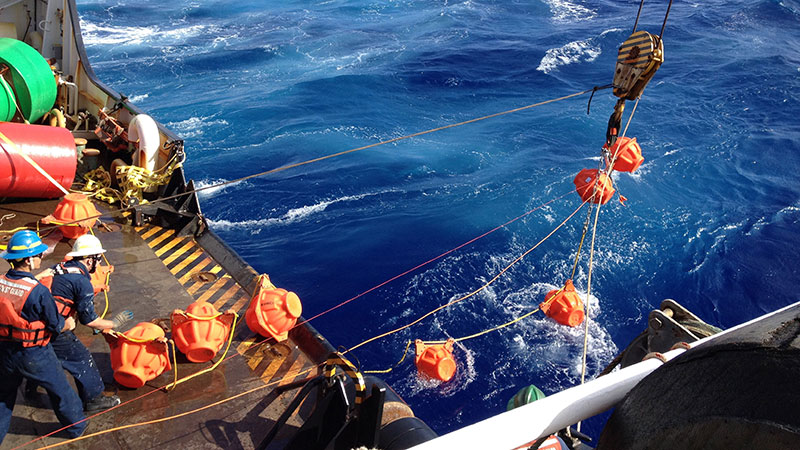January 2, 2021: Hydrophone Deployment

Image courtesy of U.S. Coast Guard Petty Officer 2nd Class Tara Molle. Download larger version (jpg, 3.9 MB).
Petty Officer 2nd Class John Thompson, a boatswain's mate aboard U.S. Coast Guard Cutter Sequoia, and Dr. Joseph Haxel, oceanographer with NOAA and Oregon State University, prepare special floats used to deploy a hydrophone in Challenger Deep near the Federated States of Micronesia on January 11, 2015. The crew of Sequoia and NOAA scientists deployed the hydrophone in an attempt to listen to ambient sound in the deepest part of the Challenger Deep.
Goals of the project included using the hydrophone to establish a baseline recording of ambient sound levels at the deepest point in the global ocean in order to:
- investigate the levels of human-generated sound,
- gauge the contribution of natural sources of sound, and
- characterize any sounds generated by the unique animal life that exists at these depths.
To listen to some of the sounds that scientists recorded in the deepest place in the ocean, visit the full Ambient Sound at Full Ocean Depth: Eavesdropping on the Challenger Deep project description.